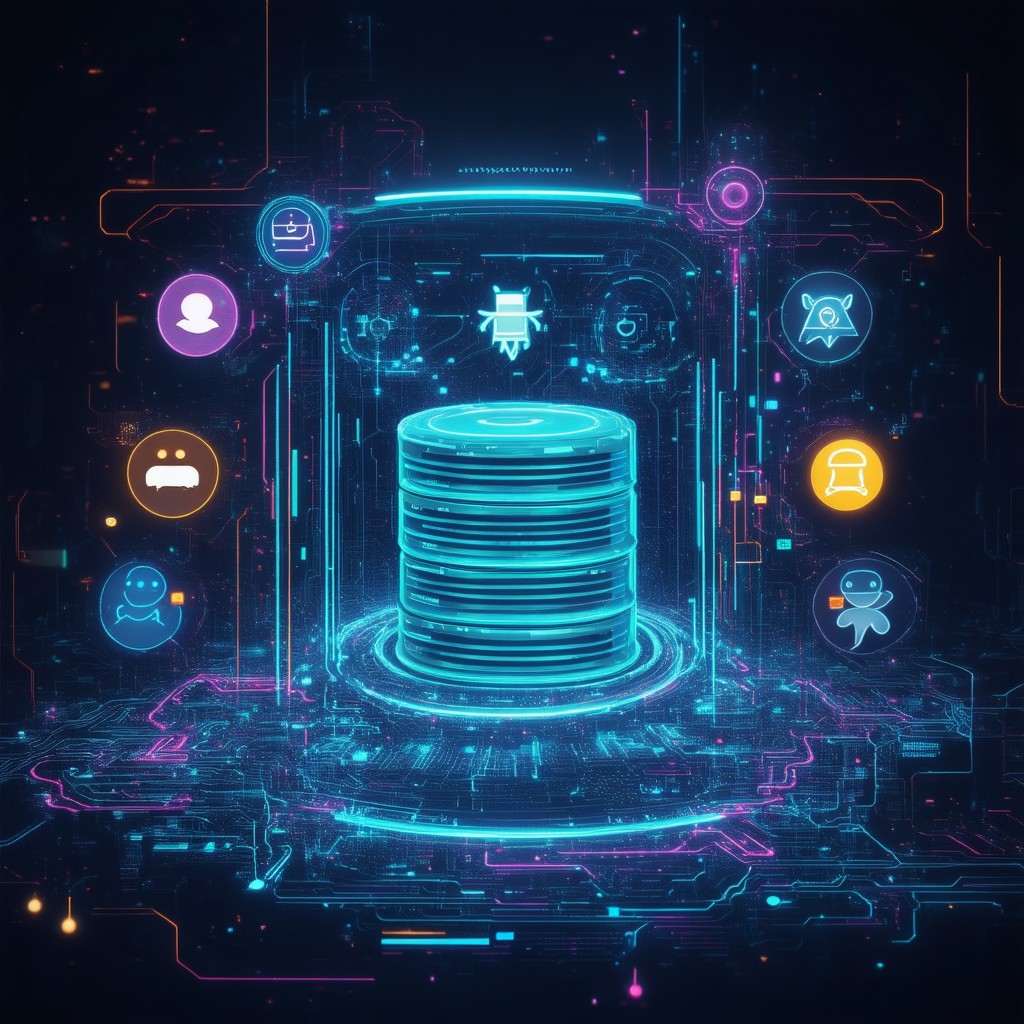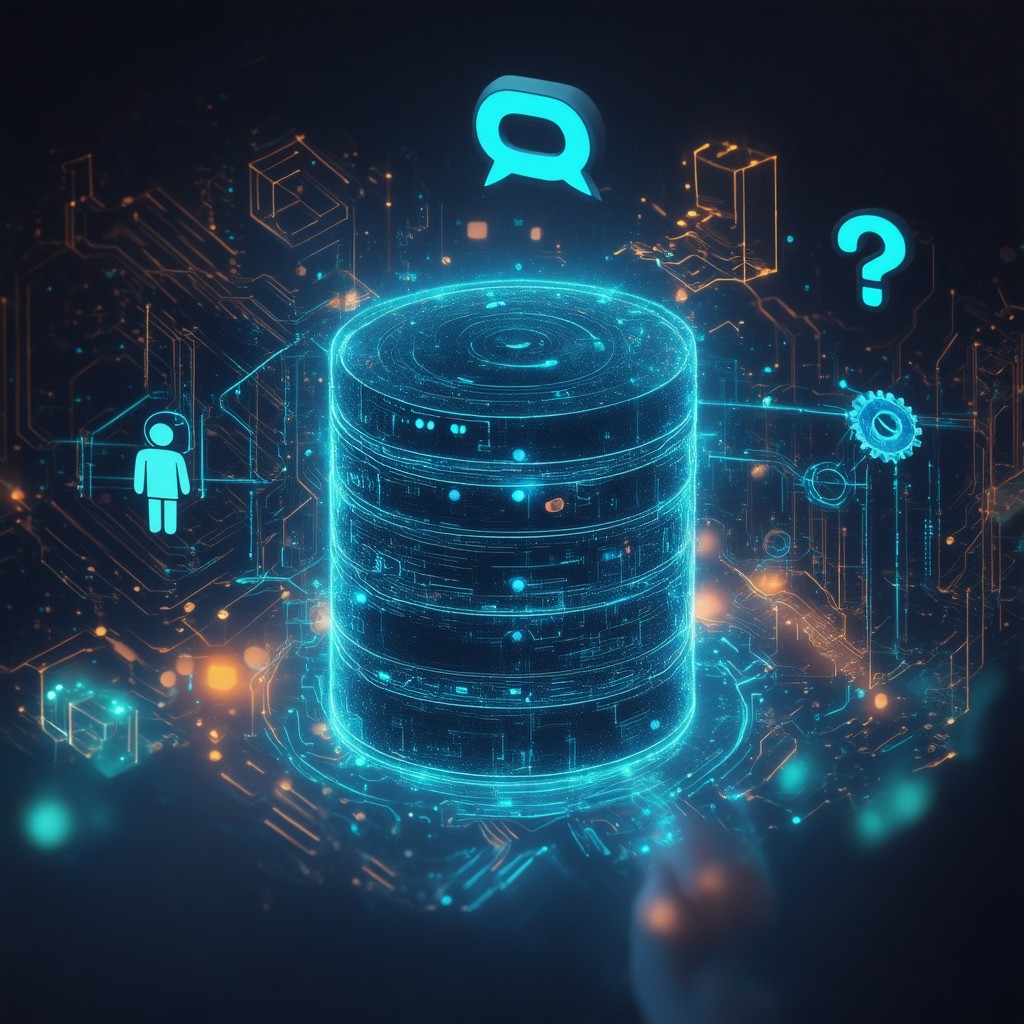Key Takeaways
- Understanding the types of database chatbots—rule-based, keyword recognition, contextual, and hybrid—can significantly enhance user interaction and data retrieval.
- Choosing the right AI for databases, like MongoDB or PostgreSQL, depends on your project’s specific requirements for scalability and data management.
- Integrating a database chatbot with real-time data access and natural language processing capabilities optimizes user experience and satisfaction.
- Utilizing free database chatbots can be a cost-effective solution for small businesses, enhancing customer engagement without heavy investment.
- Following best practices for database integration ensures efficient performance, security, and user satisfaction in chatbot applications.
In the rapidly evolving landscape of technology, the role of a database chatbot has emerged as a pivotal solution for enhancing data management and user interaction. As organizations increasingly rely on AI-driven tools, understanding how to choose the right database chatbot becomes essential. This article will delve into key comparisons of AI technologies tailored for database management, exploring which AI is best for databases and the four distinct types of chatbots that can revolutionize user engagement and data retrieval. We will also provide a comprehensive guide on how to connect your chatbot to a database, ensuring seamless integration and optimal performance. Additionally, we will examine the capabilities of ChatGPT in managing databases, discuss the role of AI in SQL, and highlight the advantages of utilizing AI for effective database management. For those interested in open-source solutions, we will explore options available on GitHub and the benefits of free database chatbots for small businesses. By the end of this article, you will be equipped with the insights needed to select the best database chatbot for your needs, supported by real-world examples and case studies of successful implementations.
Which AI is best for databases?
Overview of AI Technologies for Database Management
When considering the best AI databases for 2025, several options stand out based on their performance, scalability, and integration capabilities. Here’s a comprehensive list of the top databases suitable for AI applications:
1. MongoDB: Known for its flexibility and scalability, MongoDB is a NoSQL database that allows for the storage of unstructured data, making it ideal for AI applications that require rapid data retrieval and real-time analytics. Its document-oriented structure supports complex queries and is widely used in machine learning projects.
2. Redis: This in-memory data structure store is renowned for its speed and efficiency. Redis is particularly useful for AI applications that require quick access to data, such as real-time analytics and caching. Its support for various data types and built-in data structures enhances its utility in AI-driven environments.
3. Couchbase: Combining the best of both NoSQL and SQL, Couchbase offers high performance and scalability. It is designed for interactive applications and provides powerful querying capabilities, making it suitable for AI applications that require complex data interactions.
4. HBase: As a distributed, scalable, big data store, HBase is built on top of Hadoop and is designed for handling large amounts of sparse data. Its ability to manage structured and semi-structured data makes it a strong candidate for AI applications that analyze vast datasets.
5. PostgreSQL: This open-source relational database is known for its robustness and support for advanced data types. PostgreSQL’s extensibility allows for the integration of AI algorithms directly within the database, making it a powerful tool for data scientists.
6. MariaDB: A fork of MySQL, MariaDB offers enhanced performance and security features. Its compatibility with MySQL makes it easy to adopt for existing applications, and its support for advanced analytics makes it suitable for AI workloads.
7. MySQL: As one of the most popular relational databases, MySQL is widely used for web applications. Its reliability and ease of use make it a solid choice for AI projects, especially those that require structured data management.
8. Elasticsearch: This search engine based on the Lucene library is designed for horizontal scalability and real-time search capabilities. Elasticsearch is particularly effective for AI applications that require full-text search and analytics on large volumes of data.
9. Apache Cassandra: Known for its high availability and scalability, Cassandra is a NoSQL database that excels in handling large amounts of data across many servers. Its decentralized architecture makes it a great choice for AI applications that require fault tolerance and continuous availability.
10. Neo4j: As a graph database, Neo4j is optimized for managing and querying connected data. Its ability to model complex relationships makes it particularly useful for AI applications in social networks, recommendation systems, and fraud detection.
In conclusion, the best AI database for your needs will depend on the specific requirements of your project, including data structure, scalability, and real-time processing capabilities. For further insights and detailed comparisons, refer to authoritative sources such as the ACM Digital Library and industry reports from Gartner.
Key Features to Look for in a Database Chatbot
When selecting a database chatbot, several key features can significantly enhance its effectiveness and user experience:
– **Natural Language Processing (NLP)**: A robust NLP capability allows the chatbot to understand and respond to user queries in a conversational manner, improving user interaction and satisfaction.
– **Integration Capabilities**: The ability to seamlessly integrate with existing databases and applications is crucial. This ensures that the chatbot can access and retrieve data efficiently, providing accurate responses.
– **Real-Time Data Access**: A database chatbot should be able to pull information in real-time, ensuring that users receive the most current data available.
– **Multilingual Support**: As businesses expand globally, having a chatbot that can communicate in multiple languages broadens its usability and enhances customer engagement.
– **Analytics and Reporting**: Built-in analytics tools help track user interactions and performance metrics, allowing businesses to refine their chatbot strategies based on user behavior.
– **Customization Options**: The ability to customize responses and workflows ensures that the chatbot aligns with the specific needs and branding of the business.
By focusing on these features, businesses can select a database chatbot that not only meets their operational needs but also enhances user engagement and satisfaction. For more information on how to create a chatbot, check out our guide on creating a chatbot in Messenger.

What are the four types of chatbots?
There are several types of chatbots, each designed to serve specific functions and enhance user interaction. The four primary types include:
- Rule-based Chatbots: These chatbots operate on predefined rules and scripts. They can only respond to specific commands and are limited in their ability to handle unexpected queries. They are best suited for straightforward tasks, such as answering FAQs.
- Keyword Recognition-based Chatbots: These bots utilize natural language processing (NLP) to identify keywords in user input. They can provide more flexible responses than rule-based chatbots but still rely heavily on the presence of specific keywords to function effectively.
- Contextual Chatbots (Intelligent Chatbots): These advanced chatbots leverage machine learning and AI to understand context and user intent. They can engage in more meaningful conversations, learning from interactions to improve their responses over time. This type includes systems like virtual assistants that can manage complex queries.
- Hybrid Chatbots: Combining the features of rule-based and AI-driven chatbots, hybrid chatbots can handle both structured and unstructured queries. They provide a versatile solution, allowing businesses to offer a seamless user experience across various platforms.
Additionally, Voice-enabled Chatbots are gaining popularity, allowing users to interact through voice commands, enhancing accessibility and convenience. Examples include virtual assistants like Siri and Google Assistant.
For further reading on chatbot types and their functionalities, refer to sources such as “Chatbots: 101” by the Harvard Business Review and “The Future of Chatbots” by Gartner.
How Each Type Enhances User Interaction and Data Retrieval
Understanding the different types of chatbots is crucial for optimizing user interaction and data retrieval. Each type brings unique advantages:
- Rule-based Chatbots are ideal for handling repetitive inquiries, ensuring quick responses and freeing up human agents for more complex issues.
- Keyword Recognition-based Chatbots enhance user experience by providing relevant answers based on user input, making interactions feel more personalized.
- Contextual Chatbots improve engagement by understanding user intent and context, allowing for more natural conversations and better data retrieval.
- Hybrid Chatbots offer flexibility, enabling businesses to cater to a wide range of user needs while maintaining efficiency in data handling.
For businesses looking to implement a database chatbot, understanding these types can guide the selection of the most suitable solution for enhancing customer interactions and optimizing data management.
How to Connect Chatbot to Database?
Connecting a database chatbot to a database is a crucial step in enhancing user interaction and ensuring efficient data retrieval. By following a structured approach, you can create a seamless integration that allows your chatbot to access and manage data effectively. Here’s a step-by-step guide to help you through the process:
Step-by-Step Guide to Connecting Your Chatbot to a Database
To connect a chatbot to a database effectively, follow these comprehensive steps:
- Define the Database Structure
- Identify the type of database you will use (e.g., SQL, NoSQL).
- Design the schema to include necessary tables and relationships that will store user interactions and chatbot responses.
- Construct the API Request
- Build the API request with the necessary parameters, including the specific query you want to send to the database. Utilize RESTful API principles to ensure compatibility.
- Ensure that the request includes authentication tokens if required, to secure the connection.
- Send the API Request
- Use a programming language (such as Python, JavaScript, or PHP) to send the API request to the database. Libraries like Axios or Fetch API can facilitate this process in JavaScript environments.
- Handle the Response
- Implement error handling to manage potential issues such as timeouts or failed queries.
- Parse the response data to extract relevant information that the chatbot will use to generate replies.
- Format and Present the Results
- Structure the output in a user-friendly format, ensuring that the chatbot can easily interpret and relay the information back to the user.
- Consider using JSON format for data interchange, as it is widely supported and easy to work with.
- Test the Integration
- Conduct thorough testing to ensure that the chatbot can successfully query the database and handle various user inputs.
- Monitor performance and make adjustments as necessary to optimize response times and accuracy.
For further insights on connecting chatbots to databases, refer to resources such as the Chatbot Development Guide by the International Journal of Computer Applications and the Building Chatbots with Python book by Sumit Raj, which provide in-depth methodologies and best practices.
Best Practices for Database Integration with Chatbots
To ensure a successful integration of your database chatbot, consider the following best practices:
- Security Measures: Always implement security protocols to protect sensitive data. Use encryption and secure authentication methods to safeguard user information.
- Optimize Queries: Design efficient database queries to minimize response times. This enhances user experience and keeps interactions smooth.
- Regular Updates: Keep your database and chatbot software updated to leverage new features and security enhancements.
- User Feedback: Collect user feedback to identify areas for improvement in the chatbot’s performance and data handling capabilities.
- Documentation: Maintain clear documentation of your database structure and API endpoints to facilitate easier troubleshooting and updates.
By adhering to these best practices, you can enhance the functionality of your database chatbot, ensuring it meets user needs effectively while maintaining robust performance.
Does ChatGPT have a database?
When discussing whether ChatGPT has a database, it’s essential to clarify that ChatGPT does not operate with a traditional database structure. Instead, it functions on a large language model (LLM) that has been trained on a diverse range of datasets, including books, articles, and websites. This training enables ChatGPT to understand and generate human-like text. The model employs a neural network architecture known as the transformer model, which allows it to process and generate language based on patterns learned during its training.
Unlike conventional database systems that store and retrieve information, ChatGPT generates answers in real-time based on the input it receives. This means that it does not “retrieve” information from a database; rather, it creates responses dynamically by predicting the next word in a sequence based on the context provided. For a deeper understanding of how ChatGPT operates, you can refer to the research paper “Attention is All You Need” by Vaswani et al. (2017), which outlines the transformer architecture that powers models like ChatGPT. Additionally, OpenAI’s documentation provides further insights into the model’s capabilities and limitations, emphasizing its reliance on training data rather than a conventional database structure.
Understanding ChatGPT’s Capabilities in Database Management
While ChatGPT lacks a traditional database, its capabilities in managing and interacting with data can be enhanced through integration with various database systems. For instance, businesses can utilize ChatGPT in conjunction with a database chatbot to streamline data retrieval and user interaction. By connecting ChatGPT to a database for chatbot functionalities, users can leverage its natural language processing abilities to query data effectively, making it a powerful tool for customer support and information dissemination.
Moreover, integrating ChatGPT with a database for chatbot can facilitate more personalized user experiences. This integration allows the chatbot to access relevant data and provide tailored responses, enhancing user satisfaction and engagement. As businesses increasingly adopt AI-driven solutions, understanding how to effectively utilize ChatGPT alongside database chatbots will be crucial for optimizing communication and data management.
Comparing ChatGPT with Other Database Chatbots
When comparing ChatGPT with other database chatbots, it’s important to consider the unique features and functionalities each offers. While ChatGPT excels in generating conversational responses and understanding context, other database chatbots may focus more on structured data retrieval and specific query handling. For example, platforms like Brain Pod AI provide specialized AI solutions that can be tailored for database management, offering features that enhance data interaction and user engagement.
In contrast, ChatGPT’s strength lies in its ability to engage users in natural conversations, making it suitable for applications where user interaction is paramount. However, for tasks requiring precise data handling and retrieval, traditional database chatbots may offer more robust solutions. Ultimately, the choice between ChatGPT and other database chatbots will depend on the specific needs of the business and the desired user experience.

Is there an AI for SQL?
Yes, there are several AI tools designed specifically for SQL, enhancing database management and query generation. One notable example is AI2SQL, which offers a range of capabilities that streamline complex SQL operations.
The Role of AI in SQL Database Management
AI plays a crucial role in SQL database management by automating tasks that traditionally required extensive manual effort. Here are some key functions:
- Natural Language Processing: AI2SQL allows users to convert natural language queries into SQL commands effortlessly. This feature is particularly beneficial for those who may not be proficient in SQL syntax, enabling them to interact with databases using everyday language.
- Query Optimization: The tool provides insights into SQL queries, helping users understand and optimize their queries for better performance. This can lead to faster execution times and more efficient data retrieval.
- User-Friendly Interface: AI2SQL is designed with a user-friendly interface that simplifies the process of building and generating SQL queries. This accessibility makes it suitable for both beginners and experienced database administrators.
- Integration Capabilities: While AI2SQL is a standalone tool, it can be integrated with various platforms, enhancing its functionality. For instance, it can work alongside chatbot frameworks to facilitate database queries through conversational interfaces.
- Continuous Learning: The AI behind AI2SQL continuously learns from user interactions, improving its accuracy and efficiency over time. This adaptive learning ensures that the tool remains relevant and effective in handling diverse SQL tasks.
Popular AI Tools for SQL and Their Features
In addition to AI2SQL, several other AI tools are making waves in SQL database management:
- Brain Pod AI: This platform offers a range of AI services, including an AI chat assistant that can help users manage SQL queries through conversational interfaces.
- SQLizer: A tool that converts CSV files into SQL databases, making data migration easier and more efficient.
- DataRobot: Known for its machine learning capabilities, DataRobot can analyze SQL databases and provide predictive insights.
For more information on AI tools for SQL, you can refer to resources such as the official AI2SQL website and industry publications that discuss advancements in AI and database management.
Can AI Manage a Database?
AI has emerged as a powerful ally in database management, offering numerous advantages that streamline operations and enhance efficiency. By leveraging advanced algorithms and machine learning, AI can automate various tasks, optimize performance, and improve data security. Here are some key advantages of using AI for database management:
Advantages of Using AI for Database Management
1. **Enhanced Automation**: AI can automate routine database tasks such as data entry, backups, and maintenance. This reduces the burden on IT staff and minimizes human error, leading to more reliable data management.
2. **Improved Decision-Making**: With predictive analytics capabilities, AI can analyze historical data to forecast trends and behaviors. This empowers organizations to make informed decisions based on data-driven insights.
3. **Increased Security**: AI enhances database security by monitoring for unusual patterns and potential threats. Machine learning models can identify anomalies that may indicate security breaches, allowing for timely intervention.
4. **Natural Language Processing**: AI-powered chatbots can facilitate user interaction with databases through natural language queries. This makes data retrieval more intuitive, especially for non-technical users.
5. **Performance Optimization**: AI can continuously monitor database performance and automatically adjust configurations to enhance speed and efficiency, ensuring optimal user experiences.
6. **Scalability**: AI technologies enable databases to scale dynamically in response to growing data volumes, ensuring that performance remains consistent without manual adjustments.
7. **Integration with Chatbots**: By integrating AI with chatbots like Messenger Bot, users can access real-time data and support, enhancing engagement and satisfaction.
Real-World Examples of AI Managing Databases Effectively
Several organizations have successfully implemented AI-driven database management systems, showcasing the technology’s potential. For instance, companies like Amazon and Google utilize AI to manage vast amounts of data efficiently, optimizing their services and enhancing user experiences. Additionally, Brain Pod AI offers innovative solutions that integrate AI with database management, providing businesses with tools to streamline operations and improve data handling.
In conclusion, AI is revolutionizing database management by automating tasks, enhancing security, and improving user interaction. As organizations continue to adopt AI technologies, the future of database management looks promising, with increased efficiency and effectiveness at the forefront. For more insights into AI’s role in database management, check out resources from [Brain Pod AI](https://brainpod.ai).
Database Chatbot GitHub and Free Database Chatbot
When exploring the realm of database chatbots, GitHub emerges as a treasure trove of open-source solutions. Developers and businesses alike can find a variety of projects that cater to different needs, from simple implementations to complex systems capable of handling extensive data queries. Utilizing these resources can significantly reduce development time and costs while providing a robust foundation for building customized chatbots.
Exploring Open-Source Database Chatbots on GitHub
GitHub hosts numerous repositories dedicated to database chatbots, allowing users to access source code, documentation, and community support. Some notable projects include:
- Chatbot Database: A comprehensive repository that offers a framework for integrating chatbots with various databases, enabling seamless data retrieval and user interaction.
- Database Chatbot Framework: This project provides a modular approach to building chatbots that can interact with SQL and NoSQL databases, making it versatile for different applications.
- Open Source Chatbot: A user-friendly chatbot that connects to a database, allowing for easy customization and deployment.
These resources not only facilitate the development of chatbot databases but also foster a community of developers who share insights and improvements, enhancing the overall quality of chatbot solutions available.
Benefits of Using Free Database Chatbots for Small Businesses
For small businesses, leveraging free database chatbots can be a game-changer. Here are some key benefits:
- Cost-Effective Solutions: Free database chatbots eliminate the need for expensive software licenses, allowing small businesses to allocate resources to other critical areas.
- Enhanced Customer Engagement: By integrating a chatbot, businesses can provide instant responses to customer inquiries, improving user satisfaction and retention.
- Scalability: Many free chatbot solutions offer scalability options, enabling businesses to grow without the need for significant additional investments in technology.
- Easy Integration: Most free chatbots come with straightforward integration processes, allowing businesses to connect them to existing databases with minimal technical expertise.
In conclusion, utilizing database chatbots from platforms like GitHub not only provides access to innovative solutions but also empowers small businesses to enhance their customer interactions without breaking the bank. For those looking to dive deeper into chatbot functionalities, exploring resources like Messenger Bot’s free trial can be an excellent starting point.




